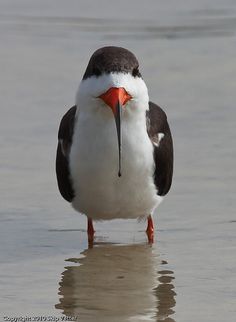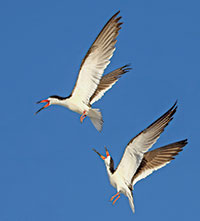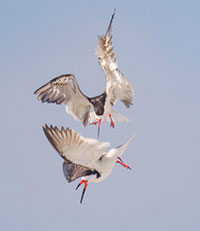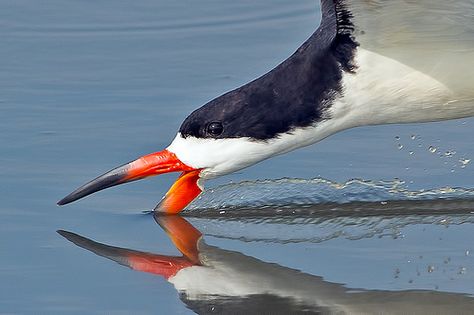by Doug Becker
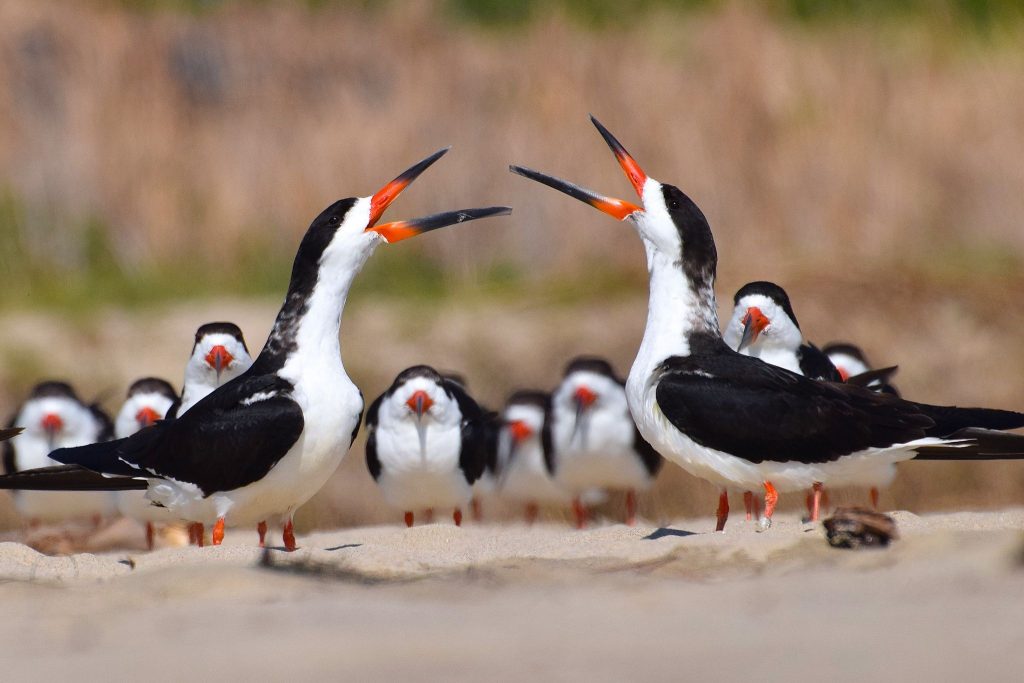
Black Skimmers are common along salt-water shorelines in the southeast, along the gulf shores, and the western shores of southern California and Mexico. These beautiful and delicate seabirds are especially notable for how they feed. Their size is similar to some gulls, or the Royal Tern, but with a long narrow wing and an enormous bill. The lower mandible is much longer than the upper which allows the Black Skimmer to gracefully fly just above the water while their lower mandible skims through the water. When a fish is felt, it’s quickly snapped up as the Skimmer stays in steady flight skimming along for the next little fish. Black Skimmers are arial foragers, and along with two other related Skimmers, these are the only birds in the world that feed in this way.
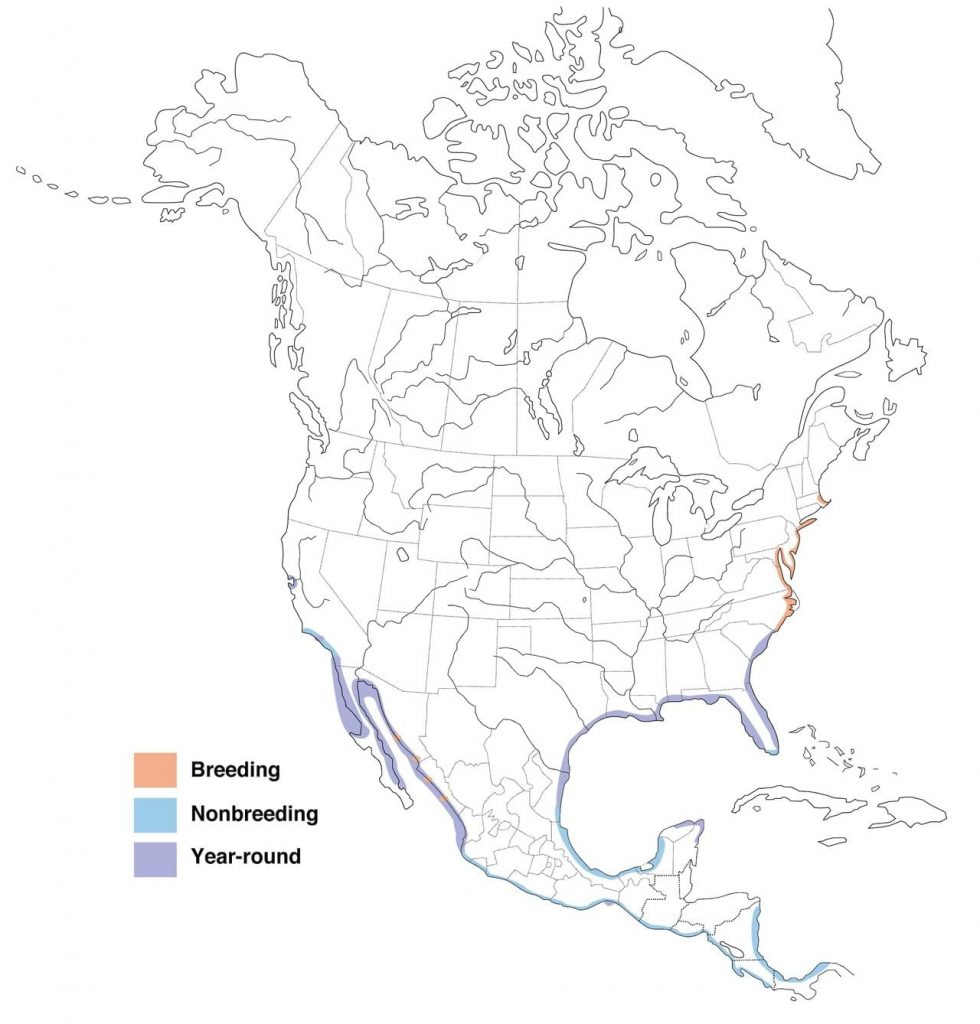
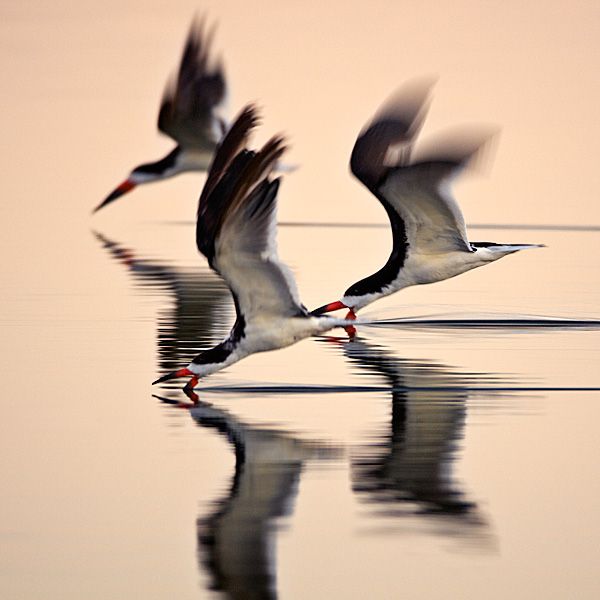
Black Skimmers are a beautiful spectacle. They are an absolute black above, and bright white below. Their large bill is red with black tips, their legs are orange, and their face is half covered with a bright white mask. Juveniles are brownish with lighter colored covert feathers. Skimmers are 16 to nearly 20 inches in length, and have a long narrow wingspan of 43-45 inches. Their long wings make them distinctive and graceful as they forage in flight. Foraging only inches above the water keeps their wing held above their body so they don’t touch the water. Black Skimmers are mostly corpuscular, meaning they forage at dawn and dusk. Sometimes they will forage well into the night. As a long time resident of Florida, frequently having a group of Skimmers skimming across the quiet water at the end of our dock in the purple sunset has been one of the finest birding experiences this birder has had.

Black Skimmers make their nests and lay their eggs on sandy, shelly, or stony remote beaches with some vegetation. Nests take only a few minutes to make as both mates scrape a circular patch, or saucer shaped depression. The average scrape is 10 inches long and an inch deep. They nest and rest frequently near Terns, seemingly because Terns are aggressive towards gulls and other egg and chick-eating predators. Clutch size is 1-5 eggs, and they brood just once per year. After a three week incubation period, the parents will feed the chicks for 3-4 weeks after hatching.
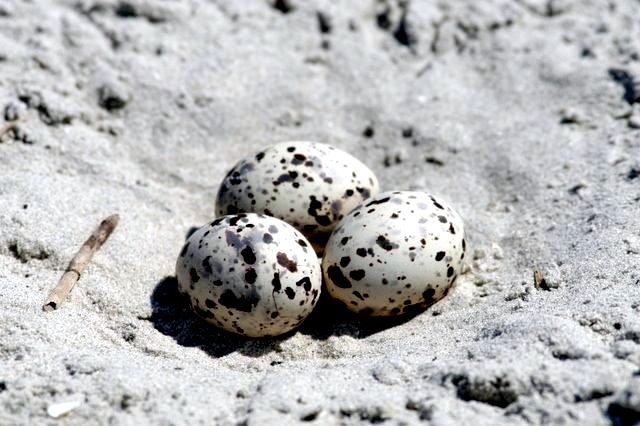
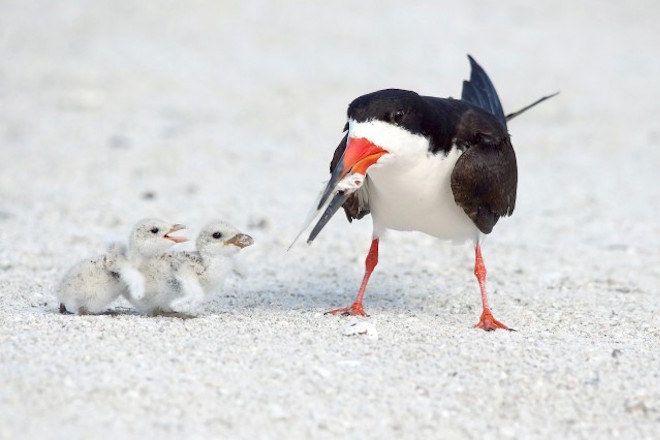
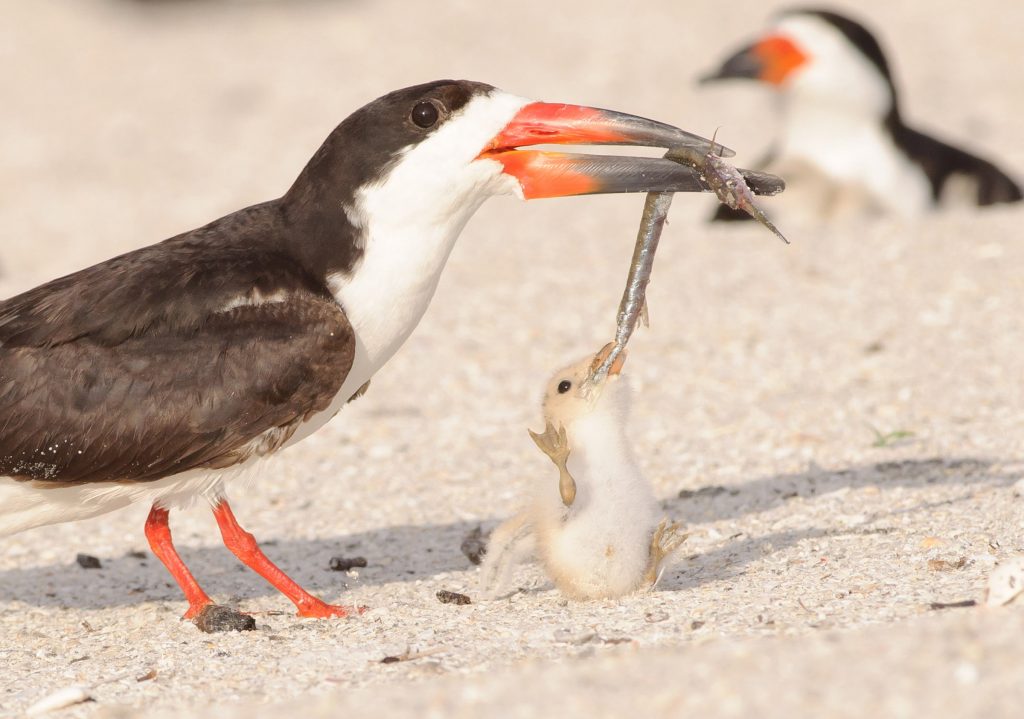
Unfortunately, and common for so many shorebirds and seabirds, the Black Skimmers are in serious decline. So many of those remote beaches where Skimmers nest and breed in colonies are now shared by people, vacationers, and hotels. As beach-goers stroll up and down the beaches, they also pass only yards from colonies of resting Skimmers all on the white sand with their bright orange bills all pointing in the same direction. Skimmers are not that shy, and will flush only when people get too near. Swimmers are surprised when a squadron of Skimmers fly right past them only inches off the water, and boats have similar close encounters as well. The North American Breeding Bird Survey estimates that populations have declined 4% per year between 1966 and 2015. This is a cumulative loss of 87% of their population during that period. Today, the North American Black Skimmer count is 65,000-70,000, and is listed as a species of high concern. It’s my urgent request to appreciate the beauty and sensitivity of our natural environment.

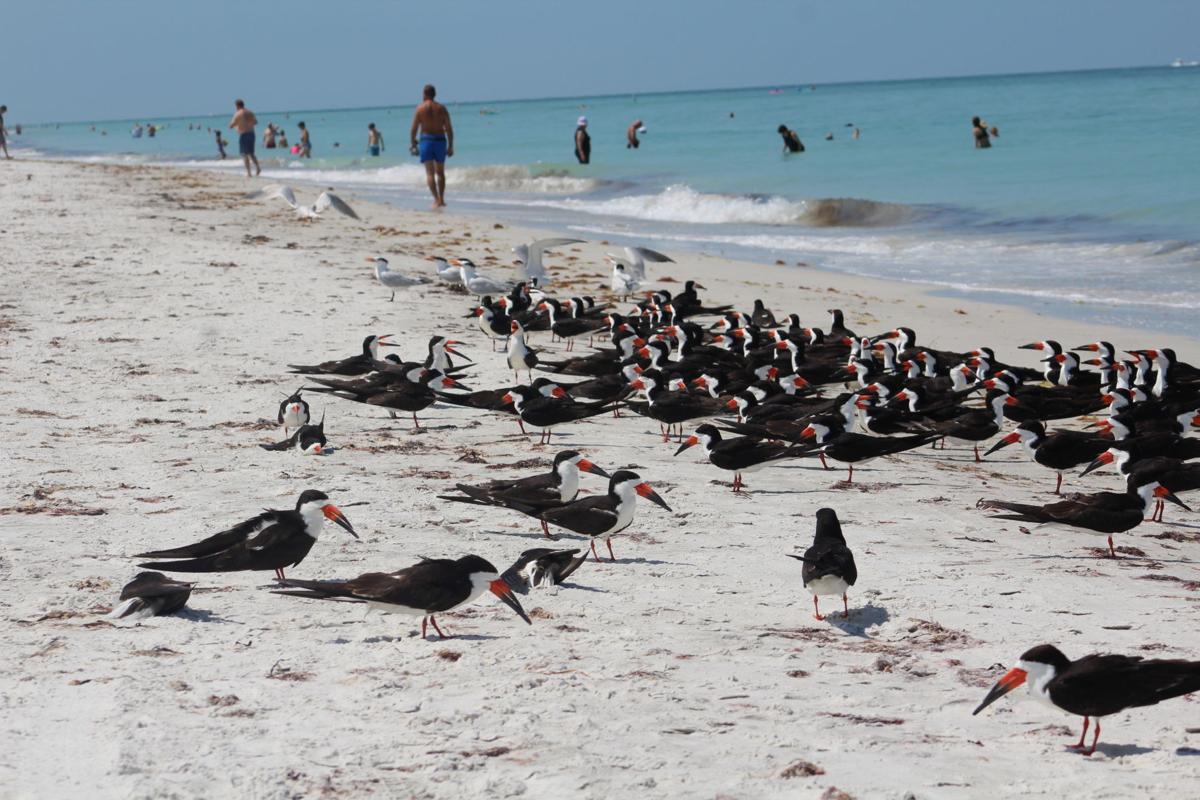
Finding these elegant birds is not hard to do. Just ask the beach locals, or any southern seashore birder, and they will tell you to simply walk the beautiful beaches and you can’t miss a colony of resting Black Skimmers. Just keep your distance so you won’t disturb. Even though they’re close, I use a good scope so I can see every feather. Good binoculars are a must, and a good camera will be well appreciated. Now, seeing a group of Skimmers skim by your dock at evening’s sundown is a matter of chance, but be ready. Black Skimmers hold a special place in nature’s beauty, so let’s give them our help and respect to keep their numbers from further decline. See ya out there!

